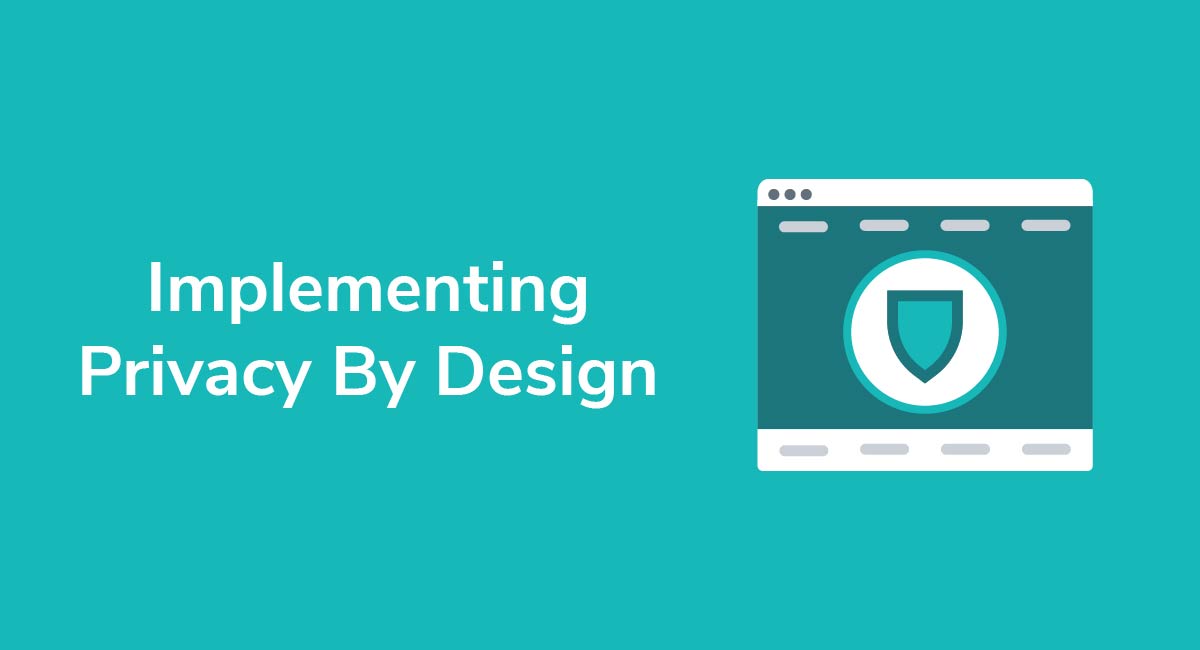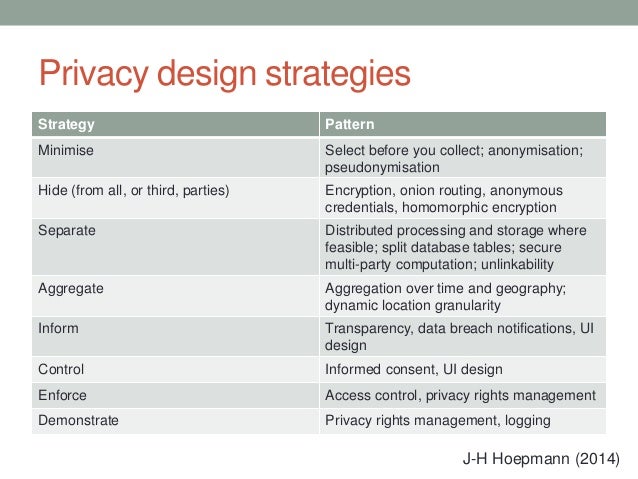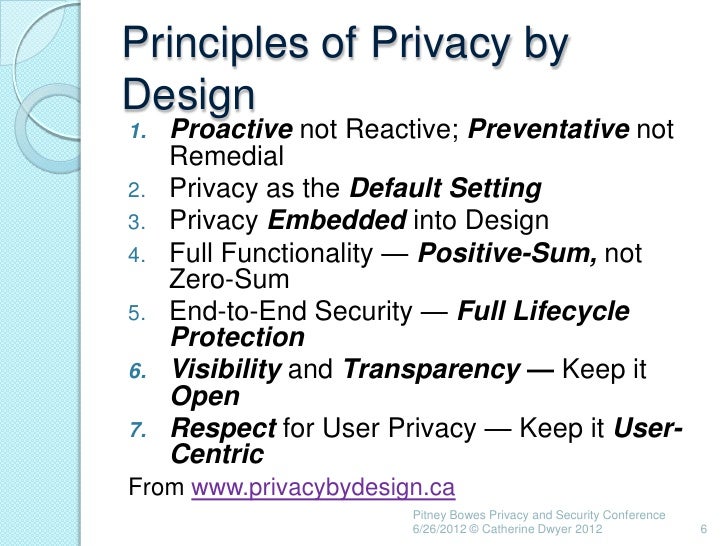What is Privacy by Design?
Privacy by Design is a proactive approach to ensuring privacy and data protection in systems, services, products, and processes from the outset. This framework, championed by Dr. Ann Cavoukian, former Information and Privacy Commissioner of Ontario, Canada, emphasizes the need to embed privacy into the design and architecture of technologies and organizational practices. By doing so, Privacy by Design aims to protect user data, maintain individuals’ privacy rights, and build trust in an increasingly data-driven world.
Oracle, a leading technology company, has been a strong advocate for Privacy by Design. Oracle recognizes the importance of data protection and has integrated Privacy by Design principles into their products, services, and operations. By promoting Privacy by Design, Oracle demonstrates its commitment to protecting user data and fostering a privacy-aware culture that benefits both organizations and individuals alike.
The Seven Foundational Principles of Privacy by Design
Privacy by Design consists of seven foundational principles that, when implemented, foster a privacy-aware organizational culture. These principles, proposed by Dr. Ann Cavoukian, are as follows:
1. Proactive, not Reactive; Preventative, not Remedial
Organizations should anticipate privacy issues before they arise, rather than reacting to them after the fact. By proactively addressing privacy concerns, organizations can prevent potential privacy breaches and their associated costs.
2. Privacy as the Default Setting
Personal data should be automatically protected in any system or service, without requiring users to take additional steps to secure their privacy. This ensures that user privacy is respected and protected by default.
3. Privacy Embedded into Design and Process
Privacy should be an integral part of the design and implementation process of any system, service, or product. This ensures that privacy considerations are addressed at every stage of development, from conception to deployment.
4. Full Functionality—Positive-Sum, not Zero-Sum
Organizations should strive to achieve full functionality while respecting user privacy. This means finding solutions that benefit all parties involved, rather than pitting privacy against functionality.
5. End-to-End Security—Full Lifecycle Protection
Personal data should be secure throughout its entire lifecycle, from collection to disposal. This includes implementing robust security measures to protect data from unauthorized access, use, disclosure, disruption, modification, or destruction.
6. Visibility and Transparency—Keep it Open
Organizations should be transparent about their privacy practices and the personal data they collect, use, and disclose. This helps build trust with users and ensures that individuals are aware of how their data is being handled.
7. Respect for User Privacy—Keep it User-Centric
Organizations should respect users’ privacy rights and preferences. This includes providing users with control over their personal data, seeking user consent when required, and ensuring that data is used for its intended purpose only.
Privacy by Design vs. Privacy as an Add-On
Organizations often face the challenge of balancing the need for data collection and processing with the responsibility to protect user privacy. This challenge has led to two primary approaches: Privacy by Design and Privacy as an Add-On. Understanding the differences between these approaches is crucial for organizations seeking to build a privacy-aware culture and protect user data effectively.
What is Privacy by Design?
Privacy by Design is a proactive approach that integrates privacy into the design and architecture of systems, services, products, and processes from the outset. By embedding privacy into the development process, organizations can ensure that privacy considerations are addressed at every stage, reducing privacy risks and fostering user trust.
What is Privacy as an Add-On?
Privacy as an Add-On, on the other hand, involves incorporating privacy features or controls after a system, service, or product has been developed. This approach often results in incomplete or ineffective privacy protections, as privacy considerations are not integrated into the core design of the solution.
The Importance of Proactively Integrating Privacy
Proactively integrating privacy into the design process offers several advantages over treating privacy as an afterthought. By adopting Privacy by Design, organizations can:
- Minimize privacy risks and potential data breaches
- Build user trust by demonstrating a commitment to privacy and data protection
- Comply with privacy regulations more effectively
- Reduce costs associated with retrofitting privacy features
- Promote a privacy-aware culture within the organization
By prioritizing Privacy by Design, organizations like Oracle show their dedication to protecting user data and fostering a privacy-aware culture that benefits both organizations and individuals alike. As data becomes an increasingly valuable asset, integrating Privacy by Design will become even more critical for organizations striving to maintain user trust and comply with evolving privacy regulations.
Oracle’s Commitment to Privacy by Design
Oracle, a leading technology company, has demonstrated a strong commitment to Privacy by Design, recognizing the importance of data protection and user privacy in today’s digital landscape. By integrating Privacy by Design principles into their products, services, and operations, Oracle fosters a privacy-aware culture that benefits both organizations and individuals alike.
Oracle’s Privacy-Aware Products and Services
Oracle offers a wide range of products and services that incorporate Privacy by Design principles, ensuring that user data is protected throughout its entire lifecycle. Some of these offerings include:
- Secure data storage and encryption solutions
- Privacy-preserving data sharing and collaboration tools
- Identity and access management solutions
- Privacy-compliant data analytics platforms
Oracle’s Privacy Initiatives
In addition to their product offerings, Oracle actively promotes Privacy by Design through various initiatives, such as:
- Collaborating with industry leaders and regulators to develop privacy best practices and guidelines
- Providing privacy training and resources for employees, customers, and partners
- Participating in privacy-focused conferences and events to share knowledge and insights
- Engaging in policy discussions and advocating for strong privacy protections
Oracle’s Data Protection Commitment
Oracle’s commitment to Privacy by Design extends to their data protection practices, which include:
- Implementing robust security measures to protect user data from unauthorized access, use, disclosure, disruption, modification, or destruction
- Adhering to strict data handling and processing standards, such as the European Union’s General Data Protection Regulation (GDPR) and the California Consumer Privacy Act (CCPA)
- Providing users with control over their personal data, including the ability to access, correct, or delete their information
- Committing to transparency in their privacy practices and data handling processes
By prioritizing Privacy by Design, Oracle demonstrates its dedication to protecting user data and fostering a privacy-aware culture that benefits both organizations and individuals alike. As data becomes an increasingly valuable asset, integrating Privacy by Design will become even more critical for organizations striving to maintain user trust and comply with evolving privacy regulations.
Implementing Privacy by Design in Your Organization
Implementing Privacy by Design in your organization requires a collaborative effort from various stakeholders, including management, developers, and data protection officers. By following these practical steps, your organization can successfully integrate Privacy by Design principles into your operations, products, and services:
1. Establish a Privacy-Aware Culture
Create a culture that prioritizes privacy and data protection by educating employees about the importance of Privacy by Design and its relevance to your organization’s success. Provide regular training and resources to ensure that all stakeholders understand their roles and responsibilities in protecting user data.
2. Involve Stakeholders Early in the Design Process
Ensure that privacy considerations are addressed from the outset by involving relevant stakeholders, such as developers, data protection officers, and legal experts, in the design process. By integrating privacy into the initial stages of development, you can minimize privacy risks and ensure that privacy is embedded into the core of your products and services.
3. Implement Privacy Controls and Features
Design and implement privacy controls and features that protect user data throughout its entire lifecycle. This may include data encryption, secure data storage, user consent mechanisms, and privacy-preserving data sharing capabilities.
4. Conduct Privacy Impact Assessments
Regularly assess the privacy impact of your products, services, and operations by conducting Privacy Impact Assessments (PIAs). PIAs help you identify potential privacy risks and vulnerabilities, allowing you to address them proactively and maintain compliance with privacy regulations.
5. Monitor and Evaluate Privacy Practices
Continuously monitor and evaluate your privacy practices to ensure that they remain effective and up-to-date with evolving privacy regulations and industry best practices. This may involve conducting periodic audits, reviewing privacy-related metrics, and soliciting feedback from users and stakeholders.
6. Collaborate with External Partners and Vendors
When working with external partners and vendors, ensure that they also adhere to Privacy by Design principles. Establish clear privacy expectations and guidelines in your contracts and agreements to protect user data and maintain your organization’s privacy commitment.
By following these practical steps, your organization can successfully implement Privacy by Design, fostering a privacy-aware culture that benefits both your organization and its users. By prioritizing Privacy by Design, you can increase user trust, reduce privacy risks, and demonstrate your commitment to data protection and responsible data management.
Benefits of Adopting Privacy by Design
Adopting Privacy by Design offers numerous benefits for organizations, including increased user trust, reduced privacy risks, and potential cost savings. By proactively integrating privacy into the design process, organizations can create products and services that respect user privacy, comply with privacy regulations, and foster a positive brand reputation.
Increased User Trust
By demonstrating a commitment to user privacy, organizations can build trust with their users. Users are more likely to engage with and remain loyal to organizations that prioritize their privacy, leading to increased customer satisfaction and long-term relationships.
Reduced Privacy Risks
Privacy by Design helps organizations minimize privacy risks by addressing potential vulnerabilities early in the design process. By proactively identifying and addressing privacy concerns, organizations can reduce the likelihood of data breaches, regulatory fines, and reputational damage.
Cost Savings
Integrating privacy into the design process can lead to cost savings in the long run. By addressing privacy concerns early, organizations can avoid the expense of retrofitting privacy features or addressing privacy issues after a product or service has been launched.
Real-World Examples of Successful Privacy by Design Implementations
Numerous organizations have successfully implemented Privacy by Design, reaping the benefits of increased user trust, reduced privacy risks, and cost savings. For instance, Oracle has integrated Privacy by Design principles into their cloud services, ensuring that user data is protected throughout its entire lifecycle. This commitment to privacy has helped Oracle build a strong reputation as a privacy-aware organization, fostering user trust and differentiating them from competitors.
By adopting Privacy by Design, organizations can create products and services that respect user privacy, comply with privacy regulations, and foster a positive brand reputation. As privacy becomes an increasingly important concern for users and regulators alike, integrating Privacy by Design will become a critical success factor for organizations striving to maintain user trust and competitive advantage.
Challenges and Best Practices for Privacy by Design
Implementing Privacy by Design in an organization can present several challenges, including:
- Lack of awareness and understanding of Privacy by Design principles
- Resistance to change from stakeholders
- Limited resources or budget for privacy initiatives
- Integration with existing processes and systems
- Balancing privacy with other business objectives
To overcome these challenges and successfully implement Privacy by Design, consider the following best practices:
1. Foster a Privacy-Aware Culture
Create a culture that prioritizes privacy and data protection by educating employees about the importance of Privacy by Design and its relevance to your organization’s success. Provide regular training and resources to ensure that all stakeholders understand their roles and responsibilities in protecting user data.
2. Secure Executive Support
Secure buy-in from top management to ensure that Privacy by Design is integrated into your organization’s strategic objectives and receives the necessary resources and support.
3. Allocate Adequate Resources
Dedicate sufficient resources, including budget, personnel, and time, to support Privacy by Design initiatives and ensure their successful implementation.
4. Collaborate Across Departments
Encourage cross-functional collaboration between departments, such as IT, legal, and marketing, to ensure that privacy considerations are addressed from multiple perspectives.
5. Establish Clear Privacy Policies and Procedures
Develop and implement clear privacy policies and procedures that outline your organization’s commitment to Privacy by Design and provide guidance for stakeholders.
6. Regularly Review and Update Privacy Practices
Conduct periodic reviews of your privacy practices to ensure that they remain effective and up-to-date with evolving privacy regulations and industry best practices. This may involve conducting privacy impact assessments, reviewing privacy-related metrics, and soliciting feedback from users and stakeholders.
By following these best practices, your organization can successfully implement Privacy by Design, addressing common challenges and fostering a privacy-aware culture that benefits both your organization and its users. Continuous evaluation and improvement are essential to maintaining your organization’s commitment to Privacy by Design and staying ahead in the evolving privacy landscape.
The Future of Privacy by Design
As technology continues to evolve and shape the digital landscape, Privacy by Design will play an increasingly critical role in protecting user privacy and fostering trust between organizations and their users. Emerging trends and technologies, such as artificial intelligence, machine learning, and the Internet of Things (IoT), will significantly impact privacy and require organizations to adapt their Privacy by Design strategies accordingly.
Artificial Intelligence and Machine Learning
AI and machine learning technologies offer numerous benefits, such as improved efficiency and personalized user experiences. However, they also pose unique privacy challenges, such as data bias, discrimination, and the potential for mass surveillance. Organizations must consider these privacy concerns when designing and implementing AI and machine learning systems, ensuring that they respect user privacy and comply with privacy regulations.
Internet of Things (IoT)
The proliferation of IoT devices, such as smart home appliances and wearable technology, has led to an explosion of data collection and sharing. Organizations must address privacy concerns related to IoT devices, such as data security, consent, and transparency, by integrating Privacy by Design principles into their IoT strategies.
Staying Informed and Adaptable
To effectively navigate the evolving privacy landscape and ensure the successful implementation of Privacy by Design, organizations must stay informed about emerging trends and technologies. This may involve monitoring privacy-related news, participating in industry forums and events, and collaborating with experts in the field. By staying informed and adaptable, organizations can maintain their commitment to Privacy by Design and continue to protect user privacy in an ever-changing digital world.
In conclusion, Privacy by Design is an essential concept for organizations to adopt, fostering user trust, reducing privacy risks, and ensuring compliance with privacy regulations. By understanding the seven foundational principles of Privacy by Design, implementing Privacy by Design in their organizations, and staying informed about emerging trends and technologies, organizations can successfully protect user privacy and maintain their competitive advantage in the digital landscape.








